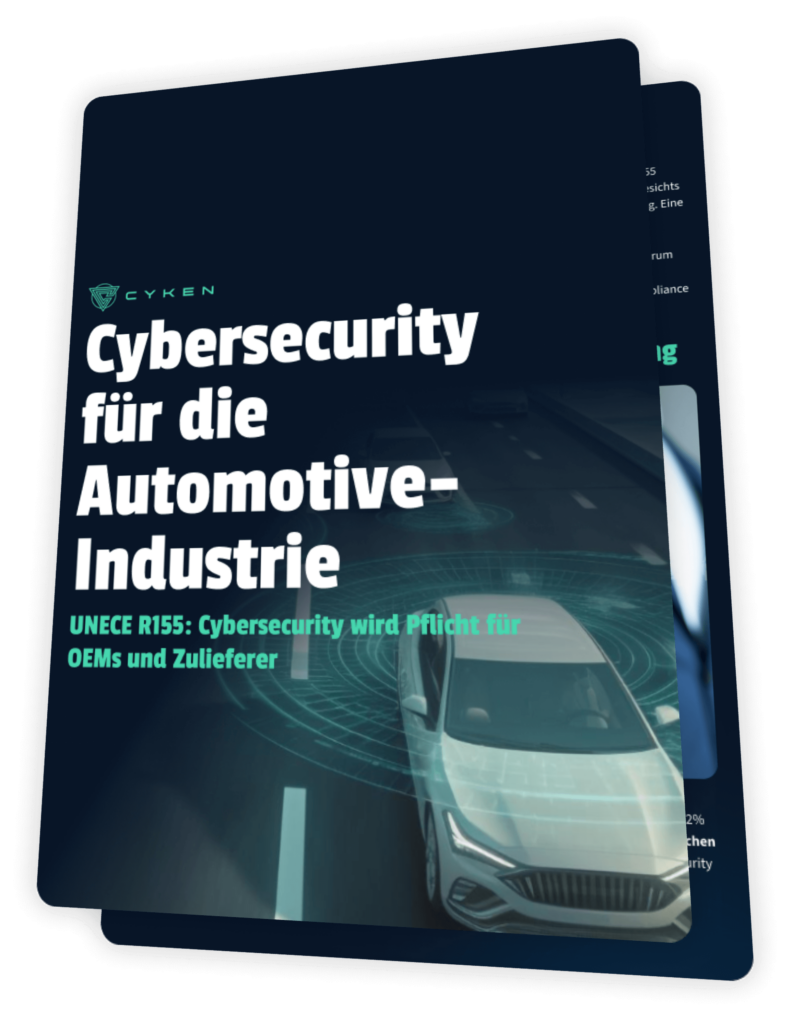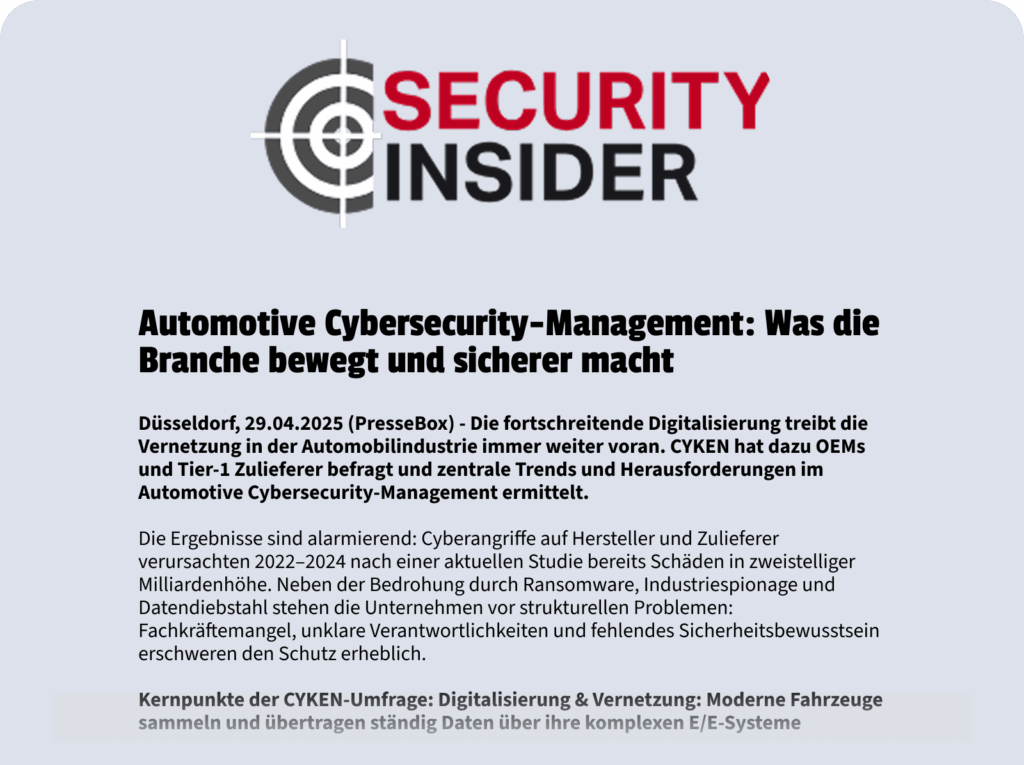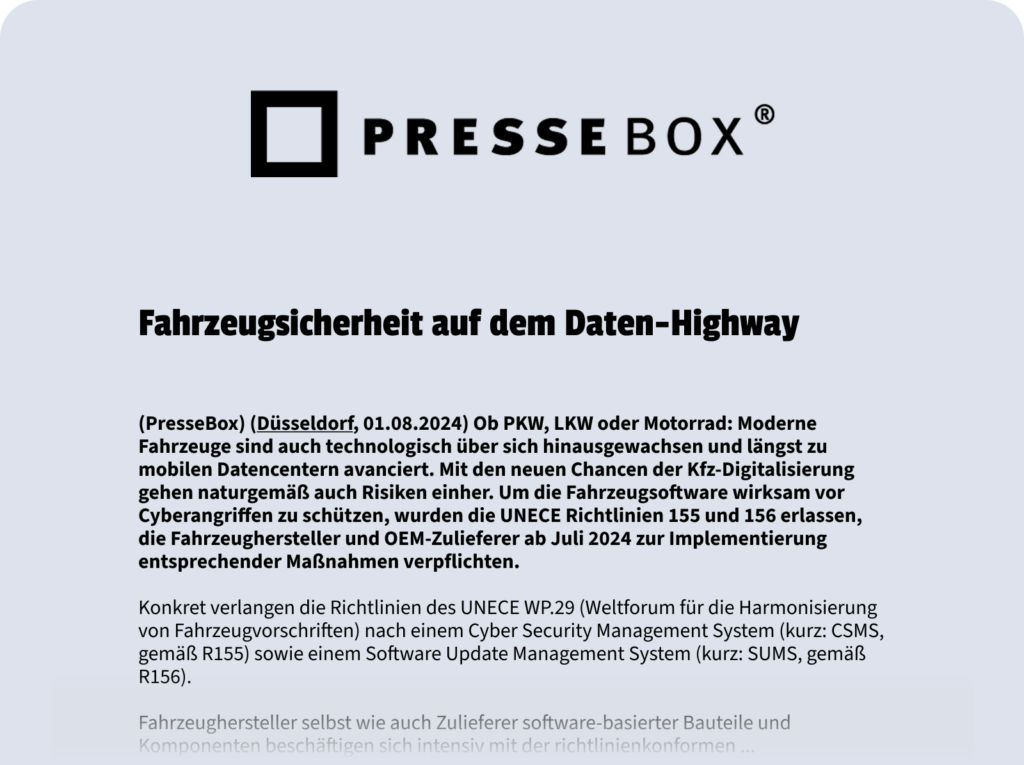Automotive cybersecurity is becoming a crucial competitive factor – and ISO 21434 is becoming an essential standard for OEMs and suppliers. As modern vehicles become more digital and connected, the attack surface for cybercriminals grows exponentially. The consequences of a successful attack? Catastrophic for your brand and potentially life-threatening for vehicle users.
Paradigm Shift for OEMs and Suppliers
ISO 21434 “Road Vehicles – Cybersecurity Engineering” transforms the entire automotive value chain. For OEMs and suppliers, cybersecurity is no longer an optional feature, but a fundamental design principle – from concept to end-of-life of a vehicle.
Who needs to act? The entire supply chain! From OEMs to Tier-3 suppliers of electronic components – ISO 21434 demands seamless cybersecurity across all development and production stages.
The 5 Pillars of Successful Automotive Cybersecurity
ISO 21434 establishes a comprehensive framework for cybersecurity in the automotive industry.
- Cybersecurity Governance: Establish clear responsibilities and processes for cybersecurity at the management level.
- Threat Analysis and Risk Assessment (TARA): Implement systematic methods to identify and assess threats and risks.
- Security-by-Design: Integrate cybersecurity measures from the beginning of development into your products and systems.
- Continuous Vulnerability Management: Monitor and address security gaps throughout the entire product lifecycle.
- Incident Response:Develop capabilities for rapid response to security incidents and to minimize potential damage.
Market Consequences of Delayed Implementation
The consequences of insufficient ISO 21434 implementation are far-reaching:
- Loss of contracts due to missing compliance evidence
- Delays in type approval of new vehicle models
- Increased liability risks in case of security incidents
- Exclusion from lucrative markets due to regulatory barriers
- Irreparable reputational damage from publicly known security breaches
Industry Reality: Implementation costs for ISO 21434 can be significant – but the costs of non-compliance can be existential!
Implementation Strategies for OEMs and Suppliers
Successful ISO 21434 implementation requires a structured approach:
- Conduct a gap analysis: Identify gaps between your current processes and ISO 21434 requirements.
- Build a cybersecurity management system (CSMS) according to the standard.
- Adapt supplier management: Integrate cybersecurity requirements into contracts and evaluations.
- Promote skill development: Train employees and build specialized cybersecurity teams.
- Pursue certification: Have your CSMS certified by an accredited body to prove compliance.
Conclusion: Competitive Advantage Through Proactive Implementation
Die ISO 21434 ist mehr als eine regulatorische Anforderung – sie bietet Automobilherstellern und Zulieferern die Chance, sich als Vorreiter in Sachen Cybersicherheit zu positionieren. In einem Markt, in dem Sicherheit zunehmend zum Kaufargument wird, können frühe Adopter signifikante Wettbewerbsvorteile erzielen.
Implementation requires investment and organizational change – but the return on investment is clear: market advantages, reduced liability risks, and long-term customer trust.
The automotive industry is at a turning point. Those who invest in cybersecurity now will secure a front-row seat in the digital transformation.







